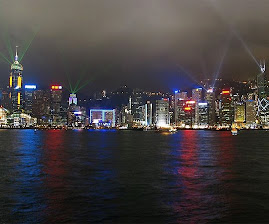
Here is a little bit of information about the part of the wall that Kennedy & James will be visiting today.
Located in Huairou County about 45 miles from Beijing, Mutianyu Great Wall enjoys a long history and is part of the glorious culture of China. It connects Juyongguan Pass in the west and Gubeikou Great Wall in the east. The wall was first built in Northern Qi Dynasty (550 - 557). In Ming Dynasty (1368 - 1644), Tan Lun and Qi Jiguang, two famous patriotic generals, rebuilt it in order to strengthen its defensive potential when they guarded the strategic pass. It served as the northern protective screen, guarding the capital and imperial mausoleums for generations.
Mutianyu Great Wall winds 1.4 miles through lofty mountains and high ridges, many sections of which are made of granite. The unique structure makes the wall almost indestructible. It measures 23 to 26 feet high and four to five yards wide. Both of the wall's inner and outer sides have parapets to defend against enemies coming from the two sides. Some parapets are saw- tooth shaped instead of the regular rectangular form. Below the parapets, there are square embrasures the top of which are designed in an arc structure, different from the traditional round embrasures.
There are 22 watch towers distributed at close intervals along the wall. They are located not only in the main wall but also at the distinctive 'branch cities'. Branch cities are built on the hill ridge against the inner or outer side of the wall. They measure from several yards to dozens of yards across. On the northwest over 3,281-feet hills, lies a section of the wall called 'Ox Horn Edge'. On the steep and lofty peaks, there are two walls named 'Flying Eagle Flies Facing Upward' and 'Arrow Lock'. What is more rarely seen on the southeast side is a general gateway platform guarded by three watch towers together. In locations of strategic importance, batteries are set up to reinforce the defense capabilities. Mutianyu Great Wall really deserves to be the archetype of the ten thousand li Great Wall.
Besides its strategically important location and compact layout, the Mutianyu Great Wall is also famous for the breath-takingly beautiful scenery. Woods cover over ninety-six percent of the total scenic area. The wall presents different aspects of beauty in the four seasons. Flowers bloom all over the mountains in spring. Grasses dress the hillside green in summer. Trees are laden with sweet fruits in autumn, and especially in October, leaves are turning red or yellow, touching the mountain tops with gold. In winter, the wall is covered by snow, making it seem more magnificent. The pine trees around Mutianyu Great Wall are well-known. There are more than 20 pines over 300 years old and about 200 pines over 100 year old. Besides, spring water at the foot of the wall tastes pure and fragrant, much appreciated by visitors.
What's more, the national first-rate cable car is installed in Mutianyu Great Wall. A sled named 'Speed' will give you an opportunity to experience thrills by taking you swoop down from the high mountains. China Stone City collects weird and beautiful stones, attracting more and more visitors to come and see.
How much fun is that going to be...riding the cable car to the Top of the mountain and than taking the sled down...sounds like a hoot...hopefully they get to experience them both and take lots of pictures.
Below is an example of the taboggan ride at the wall...sounds like a lot of fun!
Later in the afternoon the group will get to visit the wonderful site of the Olympics that were held in Beijing in August of 2008. I really like the video below and it gives you some nice shots of Beijing and the beauty of China. Take a peek and Enjoy!
Hugs,
Karen







No comments:
Post a Comment